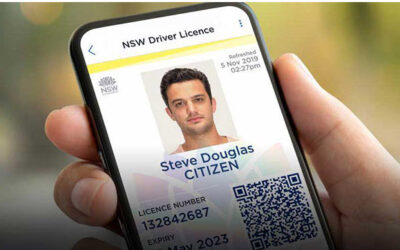The changing face of data processing, reporting, and revisions in business has been astounding. From faxing to electronic word processing, ongoing innovations made the compilation of medical reports and invoicing simple. Changes were quicker than retyping whole pages or sections. Businesses then benefited from email, cloud computing, and other evolutionary technologies to make data sharing easier. Now reports can be generated an emailed, or put it on the Cloud in a password protected file for fast access.
As a result of technological updates, we rely on speed in business operations. Thus, we time interactions with customers and clients accordingly. Information returns in minutes or hours. In the recent past, the same info would have taken weeks to generate, mail out, review, and complete. One of the most incredible innovations today is the development of Optical Character Recognition (OCR) software. Consider the significant role OCR software plays in saving time and boosting efficiency in communications.
OCR Solutions
The revolution in electronic data management has also given us another critical capability OCR software. While new reports are generated and shared online, old reports are “dead paper” sitting on a shelf. We call this hard copy information “legacy data.” The ability to use this data electronically, to be able to search the report for information and bring it into the present day, can save enormous time and money.
This hard copy, or “legacy,” information must be made usable and accessible in today’s formats to render its peak value to operations and clients. The answer to this pressing need is using optical character recognition (OCR) software to scan and create the document in electronic media.
How OCR is Used
In science, construction, manufacturing, healthcare, and many other fields, OCR document reading is used to access data in past reports and forms. Pulling an old file from storage and utilizing the OCR function on a sheet feed scanner or printer/office copier gives us the ability to transform this “dead data” to “live data.” We can electronically search this “live data” for information about patients, clients, buildings, and meetings in a cost-efficient manner. It is easily incorporated into new reports and work products. This ability saves the most critical resource in business today – time.
OCR software allows legacy data to be entered into interactive databases. This consists of software that places data into presorted categories for comparison. These interactive databases can be searched and filtered to allow for quick association of data from a variety of sources, directly from the hard copy report.
One of the notable advantages of this processing is the ability to compare stacks of recurring data (from numbers to language to locations) to establish patterns. These patterns can be further analyzed through computer models to discover and highlight repetition of events. This data shows trends in operations or occurrences.
These types of minuscule correlations are difficult for humans to spot when working with reams of hard copy data. By digitizing the information through document reading with OCR software, data is compared in new ways. As a result, analyzers spot these minor correlations that can lead to significant discoveries.
The Future of OCR
In today’s global workplace, these advances in data capture and management are far more significant. As businesses and people become increasingly mobile, it becomes more critical to access data from anywhere at any time. This is a significant drawback with accessing hard copy data if it is not at hand; instead, it’s a world away on a shelf. Electronic documentation is readily available, regardless of location or the technologies being used to access the data.
This legacy data has an inherent value related to the cost of generating the original reports and information, not to mention the cost of possibly losing access to the data. As “dead” hard copy reports on shelves, this intrinsic value cannot be monetized by the business. The capability of rendering hard copy into digital data has enabled enterprises to capitalize on their valuable legacy data that is sitting in files. As we collaborate in real time across the world on projects through electronic media, OCR document reading is critical to bringing the value of this data into the present day.
OCR software is used for purchase orders, freight, receipts, surveys, transcripts, student records, invoicing, identification, and more. It takes seconds rather than minutes to process invoices from around the world. Medical intake forms and other common medical forms are completed in minutes rather than hours. Hospitals, service bureaus, data processing departments, and A/P departments all benefit from the use of OCR software. Implementing the software saves time, can reduce the need for certain personnel, and gives a business an immediate return on their investment (ROI).
By using mobile capture of data with OCR software we can all save time, money, as well as increase our understanding of the world at large. OCR document reading allows us to make that legacy data from “dead reports” live again, becoming useful and valuable again.
Thank you for reading our blog! How can we help you? Contact us today.




